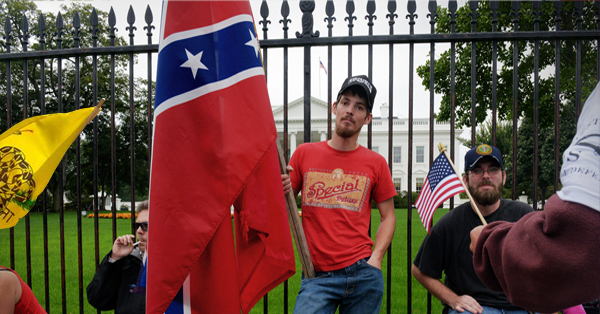
Next year marks the sesquicentennial anniversary of the nation’s Thirteenth Amendment to the United States Constitution abolished slavery and involuntary servitude. That amendment, the first of three Reconstruction Amendments, was passed by the Senate on April 8, 1864, by the House on January 31, 1865, and adopted on December 6, 1865.
The Fourteenth Amendment was adopted on July 9, 1868, as the second of the Reconstruction Amendments and addressed citizenship rights and equal protection of the laws, and was proposed in response to issues related to former slaves following the American Civil War. The Fourteenth Amendment, particularly its first section, is one of the most litigated parts of the Constitution, forming the basis for landmark decisions such as Roe v. Wade (1973), regarding abortion, and Bush v. Gore (2000), regarding the 2000 presidential election.
The Fifteenth Amendment, prohibiting the federal and state governments from denying a citizen the right to vote based on that citizen’s “race, color, or previous condition of servitude,” was ratified on February 3, 1870, as the third and last of the Reconstruction Amendments.
The 1950s was a seminal decade for the the American Civil Rights Movement. This decade saw the first major victories for civil rights in the Supreme Court, such as Brown v. Board of Education, which declared legal school segregation unconstitutional. The 1950s also saw the development of non-violent protests and the rise of Dr. Martin Luther King, Jr., as the movement’s pre-eminent leader. In 1955 Rosa Parks refused to give her seat to a white passenger on a bus in Montgomery, Ala., sparking the Montgomery Bus Boycott. Congress passes the Civil Rights Act of 1957, which created the Civil Rights Commission and authorized the Justice Department to investigate cases of African Americans being denied voting rights in the South.
During the 1960s the non-violent techniques began to pay off with civil rights activists and students throughout the South challenging segregation. By the mid-1960s, the Civil Rights Movement had succeeded in convincing the federal government to end legalized segregation, which was accomplished when President Lyndon B. Johnson was able to push through the historic Civil Rights Act of 1964 and the Voting Rights Act of 1965. According to the U.S. Department of Justice, the Act is considered to be the most effective piece of civil rights legislation ever enacted in the country. On September 1, 1967 Thurgood Marshall became the first African American appointed to the Supreme Court. On April 4, 1968 Martin Luther King, Jr., was assassinated as he stood on the balcony outside his motel room at the Lorraine Motel in Memphis, Tennessee and on April 11, President Johnson signed the Civil Rights Act of 1968 (or the Fair Housing Act) into law, which prohibits discrimination by sellers or renters of property.
There have been other challenges and setbacks to the Civil Rights Movement over the passing decades, but there is still a lot of work to be done when it comes to racial relations and civil liberties in America.
Below are 10 interesting facts, demonstrating just how far we have left to go…
1
75% of white Americans say they come in contact with “a few” or “no” black people on a regular basis.
2
More than 40% of white Americans say “many” or “almost all” black men are violent.
3
60% of working-class white Americans believe discrimination against whites is as big a problem as discrimination against minorities.
4
26% of white Americans say the successes minorities achieve in business and education are perceived as being due to racial preferences.
5
88% of white Americans oppose preferential hiring and promotion of blacks.
6
75% of white Americans say their social networks are entirely white.
7
73% of whites believe blacks should receive “no special favors” to overcome inequality.
8
10% of white American adults believe most whites are racist. 38% believe most blacks are racist.
9
38% of white Americans believe that whites work harder than blacks.
10
7 out of every 10 members of the U.S. House of Representatives are white men.
Wasserman, David. “After The Midterms, the Diversity Gap in the House Will Be Wider Than Ever.” FiveThirtyEight. ESPN Internet Ventures, 15 Sept. 2014. Web. 30 Sept. 2014. “Member Directory.” Office of the Clerk of the U.S. House of Representatives. Office of the Clerk of the U.S. House of Representatives. Web. 30 Sept. 2014

You must be logged in to post a comment Login